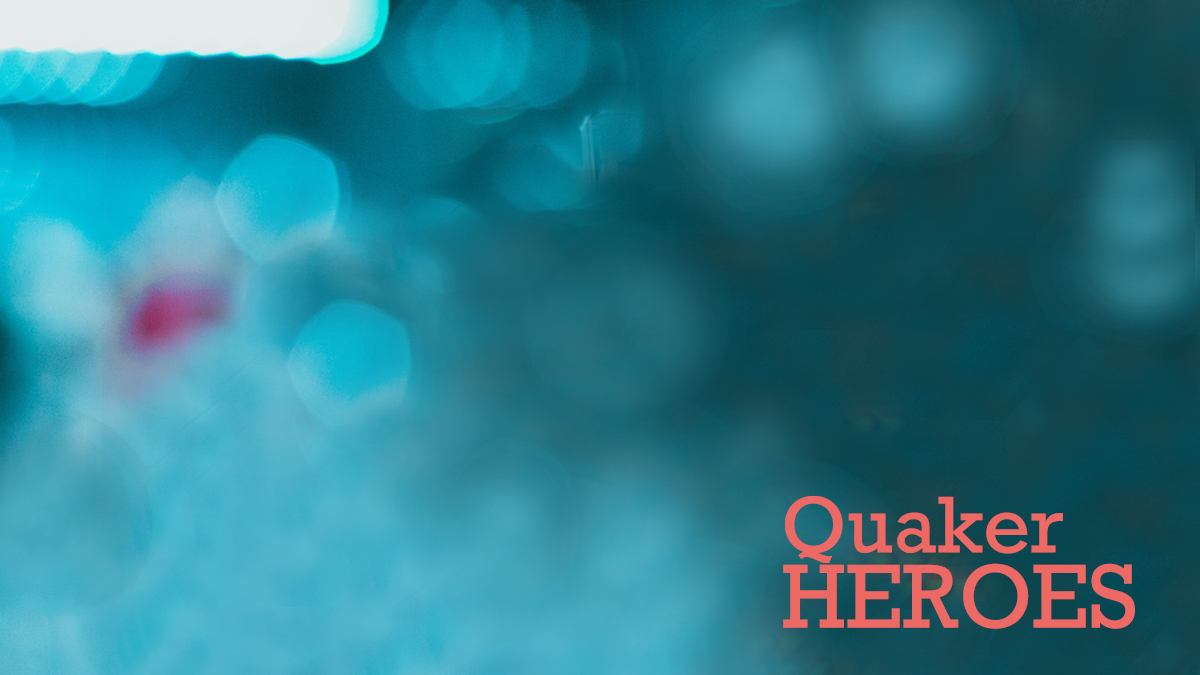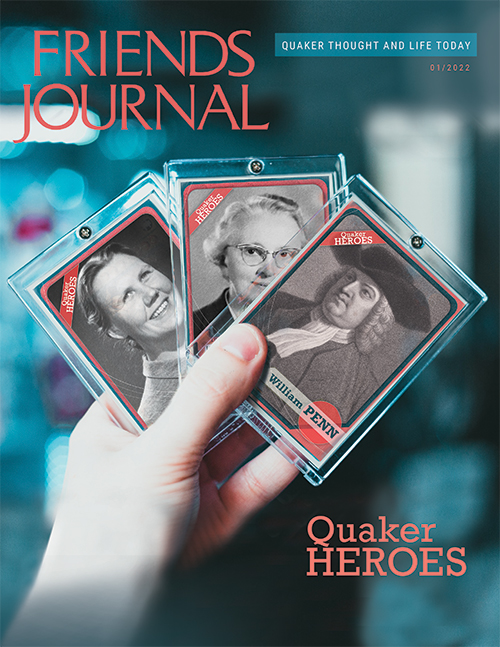I’ve never been entirely clear that Friends should even have heroes. Egalitarianism is built into our DNA. We’re led by the Inward Light, which is accessible to all. The historic testimonies of plain speech and dress were reminders to not puff ourselves up. We’re known for frowning on boasting and ostentation.
And yet we have forged heroes anyway, with buffed-up images, imaginary stories, and forgotten sins. Few have the star power of William Penn, canonized not just by Friends but by the proud civic boosters of the city and colony he founded. I could write pages about things I admire about William Penn—his writings on Quakerism, his civil theory, his legal rights advocacy. But it’s hard to balance that out with his role as a human trafficker. He held a dozen or so enslaved Africans (“servants” in the euphemism of the time) on his Pennsylvania plantation. He preferred them to indentured servants because they couldn’t run away.
It’s not easy to look at these hard histories. For some of us, it’s natural to want to minimize the harm (maybe the enslaved servants were treated well) or to try to contextualize the sin (Penn was a product of his time), but Friends and associates of Penn were publicly advocating for abolition and lamenting the tragedies of family separation two years before he moved into his Pennsylvania manor house. Nor does it work to flip the script and demonize Penn, whose contributions to both the Quaker movement and civil politics are immense and long lasting. I think our testimony of truth requires us to place him in an uncomfortable middle ground.
In our introductory article, Kathleen Bell takes on the debate over William Penn’s legacy among British Friends in the context of the unnaming of a room in London’s Friends House. We’re in a moment of reckoning as a society—take, for example, the furor over Confederate monuments in the U.S. South and the statue of Edward Colston in the English port city of Bristol. How do we reckon with difficult pasts? Online, Trudy Bayer continues the case, looking at William Penn’s legacy using the framework of retrospective justice.
We choose whom to lift up, and we also choose whom to ignore. Ean High has scoured the records of nineteenth-century traveling ministers for traces of Black Friends in the U.S. South. Often left behind by their Quaker former enslavers who moved west, some maintained biweekly Friends worship. Not accepted into membership, names lost to carelessness and time, these Friends represent another type of heroism.
There are more modern lives to examine as well. Barbara Birch lifts up the tireless social scientist and peace activist Elise Boulding. In one of our online features, Kathy Hersh profiles Jim Corbett, who committed federal crimes to follow the higher law of his conscience surrounding immigration. Max Carter delves into family history to examine the life of his Great-aunt Annice, a formidable child of Indiana Quakers who lived a life of international service. Finally, Stuart Smith contrasts comic book superheroes as he looks toward the future: what do we need to do in order to train and support a new generation of self-aware Quaker activists?
I hope this issue has words to inspire, challenge, and heal.
Update and Correction: About Our January Cover
Representing heroes can be fraught. One of the most intriguing stories in the issue is the lone Black woman maintaining Quaker worship in a mostly abandoned meetinghouse in eighteenth-century Carteret County, North Carolina. Ean High paints the picture in “Significant Silence”: she had probably been enslaved at birth by White Friends, who had left her two decades earlier when they decamped en masse for Ohio. She wasn’t on any membership rolls. There are no formal records of her. The scant knowledge we have all comes from the published journal of a traveling White minister who was passing through and didn’t bother to record her name. We have no known image of her.
When we were putting together our January cover, we hit on a baseball-card motif: we’d show some of the people featured in this issue. Some were heroes, others anti-heroes (at least as portrayed by this month’s authors). We had no easy way of portraying Ean High’s protagonist. Under the pressure of deadlines, we settled on using the images of three other Friends profiled in the issue.
This week an observant Friend pointed out that the three were all White. Of course we had known that at press time, but seeing it afresh it became obvious that for someone viewing the issue and seeing only the cover, we were implying that only White Friends are worthy of heroic stature. Images are powerful. We were ironically reinforcing the historic injustice and invisibility that our articles call out against. We are very sorry for perpetuating this impression and have revised the cover-related imagery on our website and social media.
—Martin Kelley for the FJ editorial team, on 1/6/22




